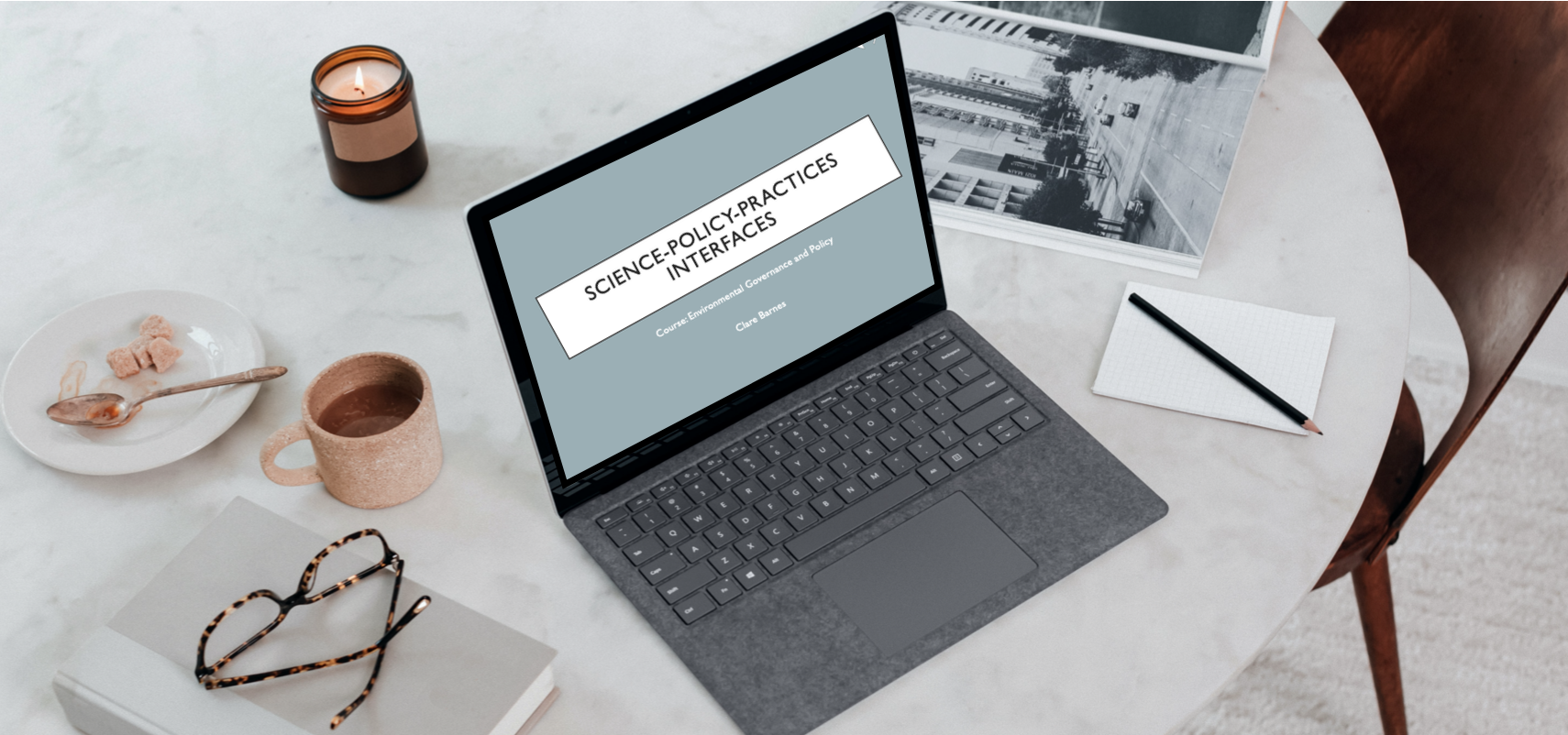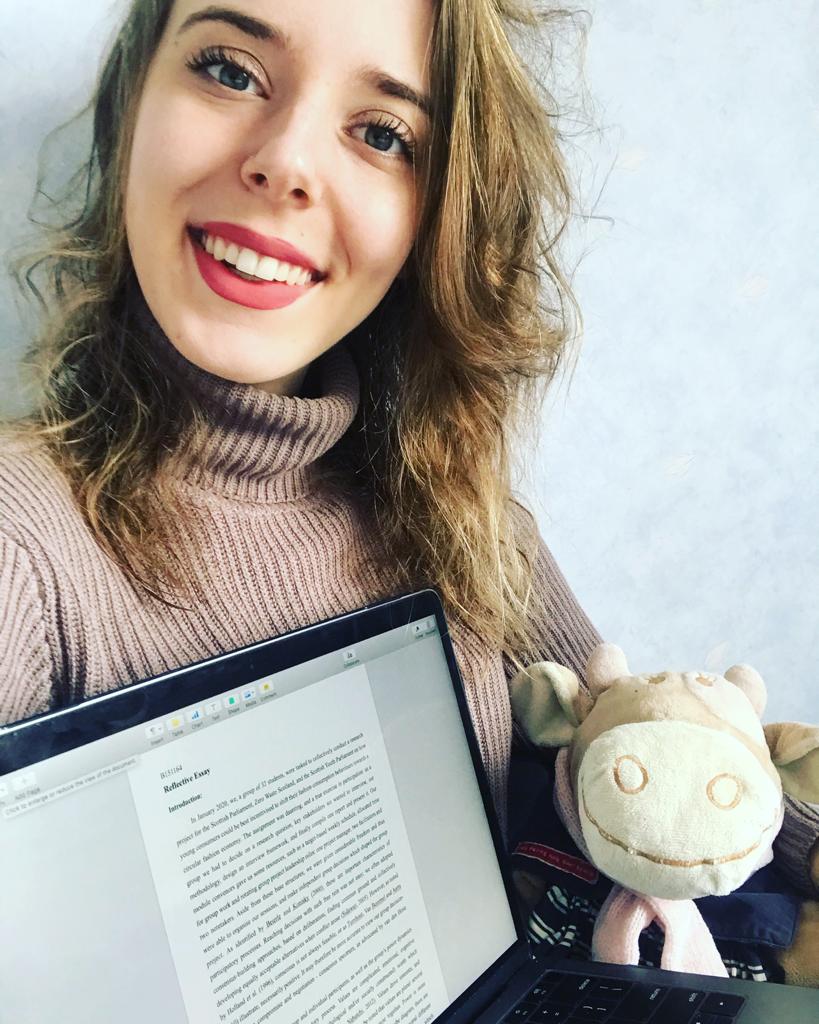Transitions to Online Learning during COVID-19: First-hand Experiences

By Audrey, MSc Environmental Sustainability
What a sudden turn this year has taken! Who would’ve thought on January 1st 2020 that our lives would have changed so drastically in a few months time. Like many other sectors, education has had to rapidly adapt to the instability and confusion wrought by COVID-19. On the 13th of March, the University of Edinburgh announced that for student and staff safety, all learning would be moved online. Everyone was, at first, uncertain how this would work in practice. My modules adopted different teaching methods: live online learning through Collaborate, or pre-recorded lecture videos/audio with attached lecture slides. Interestingly, these were not equally effective for me, personally, as a learner. My experiences with each of these methods has taught me quite a bit about my personal learning and working styles. Reflecting on our experiences, and understanding how we best learn online is important, as several experts predict that following COVID-19, universities will increasingly transition to online learning. So, here are my experiences and reflections, offering one lens into online student learning at the University of Edinburgh!
Before I move on, I would like to say a massive thank you to all of my lecturers and course organisers at the School of Geosciences. They have done an amazing job adapting to the current situation, and have done their best to support us. We all truly appreciate it, and hopefully we will be able to tell you in person soon!

Photo by Emma Matthews Digital Content Production on Unsplash
Collaborate: Live Teaching & Learning
My first online lecture happened on Collaborate. I was very impressed by this platform, as it really managed to create a virtual classroom! The lecture slides were presented as a blackboard, which everyone could see and annotate (producing some amazing works of art by Environmental Sustainability students!). The ‘raise your hand’ function was quite endearing, since it was almost the same as being in class, and it allowed us to hear each other’s voices. Another feature I found particularly useful was the ability on Collaborate to split up into smaller groups, within the same conference call, to discuss lecture topics. This was quite similar to our normal small group work activities. Being able to interact live with my lecturers and peers, and to hear their voices (sounds strange, but it makes a difference) was my favourite part about Collaborate: it brought a sense of normalcy, and really boosted my spirits.
However, I found that I had more trouble focusing on the lecture and in wider group discussion than I would normally. The lecture chat bar could be quite distracting, and it was difficult to focus in larger group discussions, as several students were talking at once, and questions asked were often unrelated to one another. I think this is because, ultimately, I learn best ‘live’ through person-person interactions. Though Collaborate did well in mimicking ‘real’ lectures, the lack of physical lecturer and classmate presence made deeper focus and engagement with content challenging for me.

Photo by Windows on Unsplash
Pre-Recorded Video/Audio & Powerpoint: On-Demand Teaching & Learning
Another method adopted by lecturers was to pre-record audio or videos, and upload them with the lecture slides. I really enjoyed the video recordings, as this felt more personal, as if I was having a private one-to-one lecture. A significant benefit of the pre-recorded lectures was the ability to pause recordings, and rewind if I had not completely understood a point, or needed more time to take down notes. I also found myself actively reflecting more on the lecture material by immediately reviewing notes taken, once the recording had ended, to ensure that I had understood the content. The individual audio recordings per slide particularly encouraged this, as they were tailored specifically to the slide content and thus were very easy to follow.
Deeper engagement with lecture material was further encouraged by small discussion groups, organised a week after lecture upload. I really enjoyed these online tutorials, as the discussions we had were really tailored around our questions, and points we found interesting during the lecture. This made for some very interesting and in-depth debates and discussions that were unique to our tutorial group. It felt as if we were able to customise the more general lecture to our own interests and needs.

Me in my home office. AKA my childhood room.
Final Thoughts
In summary, the pre-recorded lectures personally worked best for deep learning and engagement with course material, especially when they were followed-up with a tutorial. However, the experience with Collaborate was thoroughly enjoyable, and being able to interact live with peers and lecturers provided a sense of normalcy, increasing my morale. Particularly touching was that at the end of each live lecture, all students flooded the chat bar with ‘thank yous’ and words of appreciation. Though there was a lack of physical presence in live lectures, which made focus challenging at times, the sense of community and support between students and lecturers was tangible.
It will be interesting to observe the future development of online learning in higher education, and the impacts that COVID-19 will have on it. Again, thank you to the lecturers and classmates who have made this online learning experience a very positive and uplifting one! By supporting one another, and innovating new ways of working and learning, we will get through these challenging times.
Stay safe everyone!
Audrey, MSc Environmental Sustainability.
Follow us on Instagram or Twitter for more updates from our Geosciences students!



